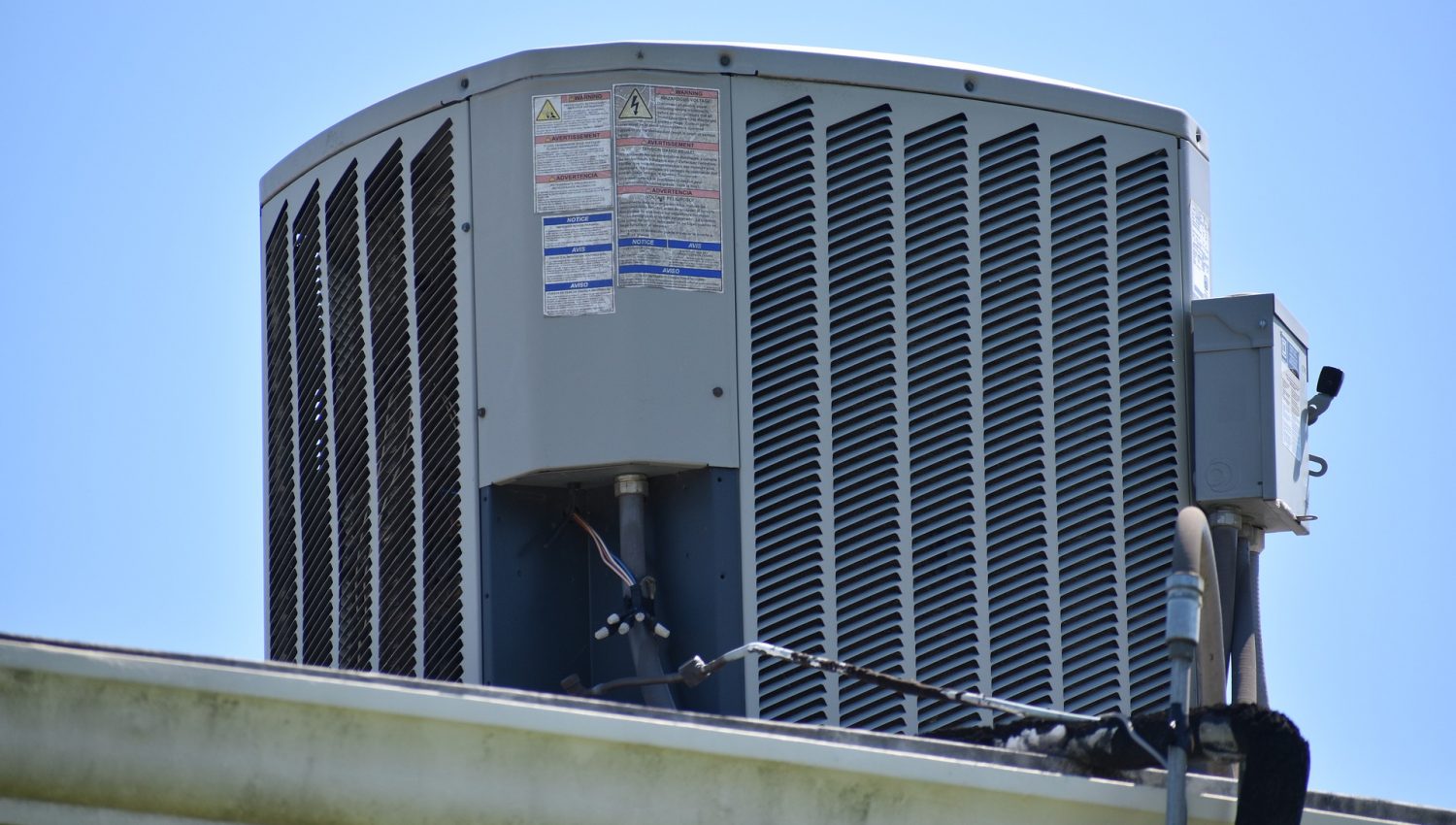How to Check Refrigerant Level in Ac Unit
To check refrigerant level in an AC unit, use a refrigerant pressure gauge. Attach gauge to the service valve.
Maintaining the appropriate refrigerant level in your AC unit is crucial for optimal performance. If the refrigerant level is too low or too high, it can lead to cooling issues and increased energy consumption. Checking the refrigerant level regularly helps ensure efficient operation and prevents potential damage to the system.
By following proper procedures and using the right tools, you can easily monitor and adjust the refrigerant level in your AC unit, keeping it running smoothly and effectively. Let’s delve deeper into the importance of refrigerant levels and how to accurately check and maintain them in your AC unit.

Credit: andersonair.com
Why Checking Refrigerant Level Is Important
Checking the refrigerant level in your AC unit is vital for maintaining the efficiency and performance of the system. Refrigerant is the substance responsible for cooling the air within the unit, and its proper level is crucial for the unit to function effectively. In this section, we will explore the significance of maintaining the proper refrigerant level and the impacts of both low and high levels on your AC unit.
Significance Of Proper Refrigerant Level
Proper refrigerant level ensures that your AC unit can effectively cool the air and maintain a comfortable indoor temperature. When the refrigerant level is at the manufacturer’s recommended level, it allows the system to operate efficiently, reducing energy consumption and preventing unnecessary strain on the unit.
Impact Of Low Refrigerant Level
Low refrigerant level can significantly impair the cooling capacity of your AC unit. This can result in the system working harder to achieve the desired temperature, leading to increased energy consumption and potential damage to the compressor. Inadequate cooling may also result in discomfort and decreased indoor air quality.
Effects Of High Refrigerant Level
An excessively high refrigerant level can also cause issues within the AC unit, leading to reduced efficiency and potential damage to the system components. This imbalance can hinder the heat transfer process, impeding the unit’s ability to cool the air effectively, and may result in increased energy consumption and reduced lifespan of the equipment.
Tools And Equipment Needed
Before checking the refrigerant level in your AC unit, ensure you have the necessary tools and equipment ready. Here is what you will need:
Pressure Gauges
Use pressure gauges to measure the pressure of the refrigerant in the system accurately.
Refrigerant Manifold
A refrigerant manifold helps to connect the pressure gauges to the AC unit for precise readings.
Thermometer
Have a thermometer on hand to check the temperature of the incoming and outgoing air in the unit.
Protective Gloves And Goggles
Wear protective gloves and goggles to ensure your safety while handling refrigerant and components.
Preparation Steps
Learn how to easily check the refrigerant level in your AC unit with these simple preparation steps. Ensure efficient cooling and prolong the lifespan of your unit by following this essential maintenance procedure.
Turn Off The Ac Unit
Before checking the refrigerant level, make sure to turn off the AC unit to prevent any accidents.
Remove The Access Panels
To access the refrigerant lines, remove the access panels on the AC unit carefully.
Locate The Service Valves
Locate the service valves on the refrigerant lines of the AC unit for checking the refrigerant level.
How To Measure Refrigerant Level
When it comes to maintaining the efficiency of your AC unit, it’s crucial to ensure that the refrigerant level is within the appropriate range. Measuring the refrigerant level is essential for the optimal performance of the unit. In this guide, we will go through the steps on how to measure the refrigerant level in your AC unit using pressure gauges.
Connect Pressure Gauges
Before measuring the refrigerant level, it’s important to connect the pressure gauges to the service valves of the AC unit. The pressure gauges allow you to monitor the high and low-pressure sides of the system, providing valuable data for determining the refrigerant level.
Read The Pressure Readings
Once the pressure gauges are connected, you can begin to read the pressure readings on the gauges. The high-pressure side will typically have a higher reading, while the low-pressure side will have a lower reading. These readings are crucial for determining the refrigerant level in the system.
Interpret The Readings
After obtaining the pressure readings, it’s essential to interpret the data to assess the refrigerant level. Comparing the readings to the manufacturer’s specifications will help determine if the refrigerant level is within the recommended range. Ensure to follow the specific guidelines provided by the manufacturer for your AC unit.
Recharging Refrigerant
Properly recharging your AC unit’s refrigerant is essential for ensuring optimal cooling performance. If you notice that your AC is not cooling as effectively as it used to, it might be time to check and recharge the refrigerant level. Follow these steps to recharge the refrigerant and restore your AC unit’s functionality.
Identify The Refrigerant Type
Before recharging the refrigerant, it is important to identify the type of refrigerant used in your AC unit. The most common types of refrigerants used are R-22 and R-410A. R-22 is often found in older AC units, while R-410A is used in newer models. This information can usually be found on the unit’s data plate. Identifying the correct refrigerant type is crucial, as using the wrong type can cause damage to the unit or result in inefficient cooling.
Calculate The Amount Needed
Once you have identified the refrigerant type, the next step is to determine the amount of refrigerant needed for recharging. This calculation is typically based on the AC unit’s tonnage. One ton of cooling capacity requires a specific amount of refrigerant. Refer to the manufacturer’s guidelines or consult a professional HVAC technician to ensure you calculate the correct amount.
Connect Refrigerant Manifold
Before adding refrigerant, you’ll need to connect a refrigerant manifold to the AC unit. This manifold allows you to monitor and control the refrigerant flow. It consists of gauges and hoses that connect to the low and high-pressure ports of the unit. Make sure to attach the manifold’s hoses securely to the appropriate ports, following the manufacturer’s instructions.
Add The Refrigerant
Once the refrigerant manifold is properly connected, you can proceed to add the refrigerant. Start by slowly opening the valve on the refrigerant cylinder while monitoring the pressures on the manifold gauges. As you add refrigerant, the pressures should rise to the appropriate levels specified for your AC unit. Be cautious not to overcharge the system, as this can lead to damage. A professional technician can guide you through the process if you are unsure.
Recharging the refrigerant level in your AC unit can significantly improve its performance and ensure efficient cooling. By following these steps and adhering to safety precautions, you can recharge the refrigerant properly and enjoy a comfortable and cool environment in your home or office.

Credit: andersonair.com

Credit: m.youtube.com
Frequently Asked Questions On How To Check Refrigerant Level In Ac Unit
How Do I Know If My Ac Is Low On Refrigerant?
If your AC is low on refrigerant, it may have reduced cooling performance and longer cooling cycles. Look for ice on the evaporator coil and listen for a hissing sound near the refrigerant lines. A professional technician can accurately diagnose and fix the issue.
How Do I Check The Refrigerant Level In My Home Ac Unit?
To check the refrigerant level in your home AC unit, consult a professional HVAC technician for accurate assessment.
How Do I Add Refrigerant To My Ac Unit?
To add refrigerant to your AC unit, contact a professional HVAC technician for proper installation and maintenance.
How Do You Know How Much Refrigerant Is Put Into An Ac System?
To determine the amount of refrigerant in an AC system, use a refrigerant scale. The technician measures and adds refrigerant as needed, following manufacturer specifications.
How Can I Check The Refrigerant Level In My Ac Unit?
To check the refrigerant level in your AC unit, you’ll need a pressure gauge and knowledge of the manufacturer’s recommended pressure range.
Why Is It Important To Check The Refrigerant Level In An Ac Unit?
Checking the refrigerant level is crucial for optimal AC performance, as low levels can lead to reduced cooling capacity and higher energy bills.
What Are The Signs Of Low Refrigerant In An Ac Unit?
Signs of low refrigerant in an AC unit include poor cooling performance, ice buildup on the evaporator coil, and the system constantly running.
Conclusion
Maintaining proper refrigerant levels in your AC unit is crucial for its efficiency and lifespan. Regular checks and timely refills can prevent malfunctions and save you money on repairs. Make sure to follow the manufacturer’s guidelines and seek professional help if needed.
Taking care of your AC will ensure a cool and comfortable home all summer long.

